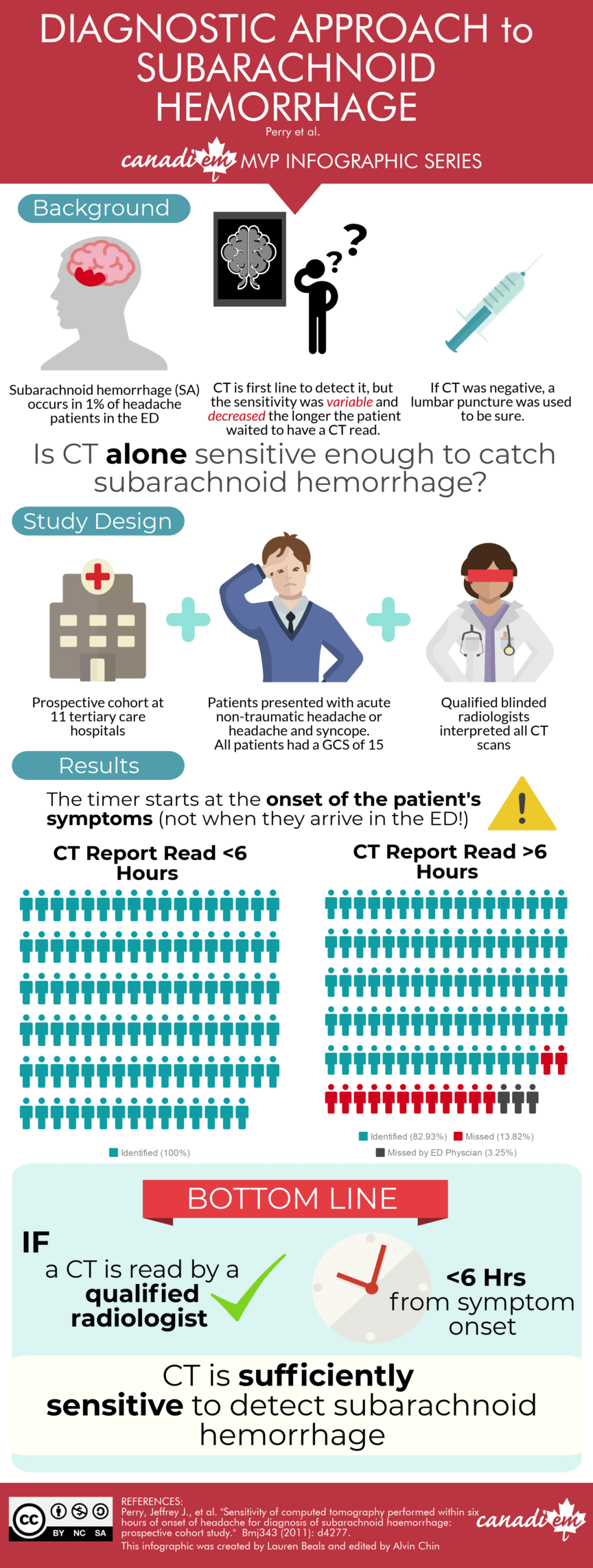Editor Note – This post is the first of a series of articles detailing “must know” papers in emergency medicine. Each post will summarize the findings of one study identified by the research of Bazak et al.1
[bg_faq_start]Introducing the CanadiEM MVP Infographic Series
Evidence-based practice is critical for delivering quality emergency care, but with such a broad specialty identifying and recalling high-yield studies can be challenging. This is especially true for new EM learners, who are tasked with becoming evidence-informed while transitioning to practice.
To make this process easier, CJEM recently published a survey-based study aimed at compiling “must know” papers for emergency medicine trainees.
The study, conducted by Bazak et al, created a list of important papers based on the input of experts from specialty EM programs across the country.1 Participants were asked to generate a list of EM papers they considered to be the most influential, then rank the papers based on which they thought were the most important to include. Their final list contained 29 studies, 10 of which were supported by 100% of participants surveyed.
The CanadiEM MVP series will summarize these consensus papers using infographics, each of which will detail a different study’s objectives, methods and results.
The end goal of the series is to create an effective resource for recalling key papers, and to act as a primer for new trainees orienting themselves to EM evidence.
[bg_faq_end]Diagnostic Approach to Subarachnoid Hemorrhage
The first paper featured in the MVP series is a groundbreaking study published by Perry et al in BMJ concerning the diagnosis of subarachnoid hemorrhage (SA).2
Prior to their publication in 2011, CT was already considered first line for the diagnosis of SA, but its reported sensitivity varied significantly (90.5-100%). Existing studies examined older technology (2nd generation CT scanners) over varied time windows (up to 24 hours despite evidence of the sensitivity decreasing over time) or were too small to produce reliable results.
Because there was no evidence to suggest a CT could rule out SA in someone who fit the clinical picture, a lumbar puncture was considered gold standard and completed after suspicious negative scans.
To address these concerns Perry et al conducted a prospective cohort study at tertiary care emergency departments across Canada that would assess the effectiveness of 3rd generation CT in identifying subarachnoid hemorrhage. They found that, if read within 6 hours of the onset of a patient’s symptoms, 100% of subarachnoid hemorrhages in the study cohort were identified. In the control cohort, several cases of subarachnoid hemorrhage were missed in scans read after 6 hours or that were cleared initially by the ED physician only to be flagged by a radiologist later.
Overall, the findings of Perry et al significantly reduced the number of invasive tests required to diagnose SA by increasing physician confidence in CT and providing a time frame that ED care teams could use to guide their assessments.
This post was peer reviewed by Alvin Chin and uploaded by Lauren Beals.




